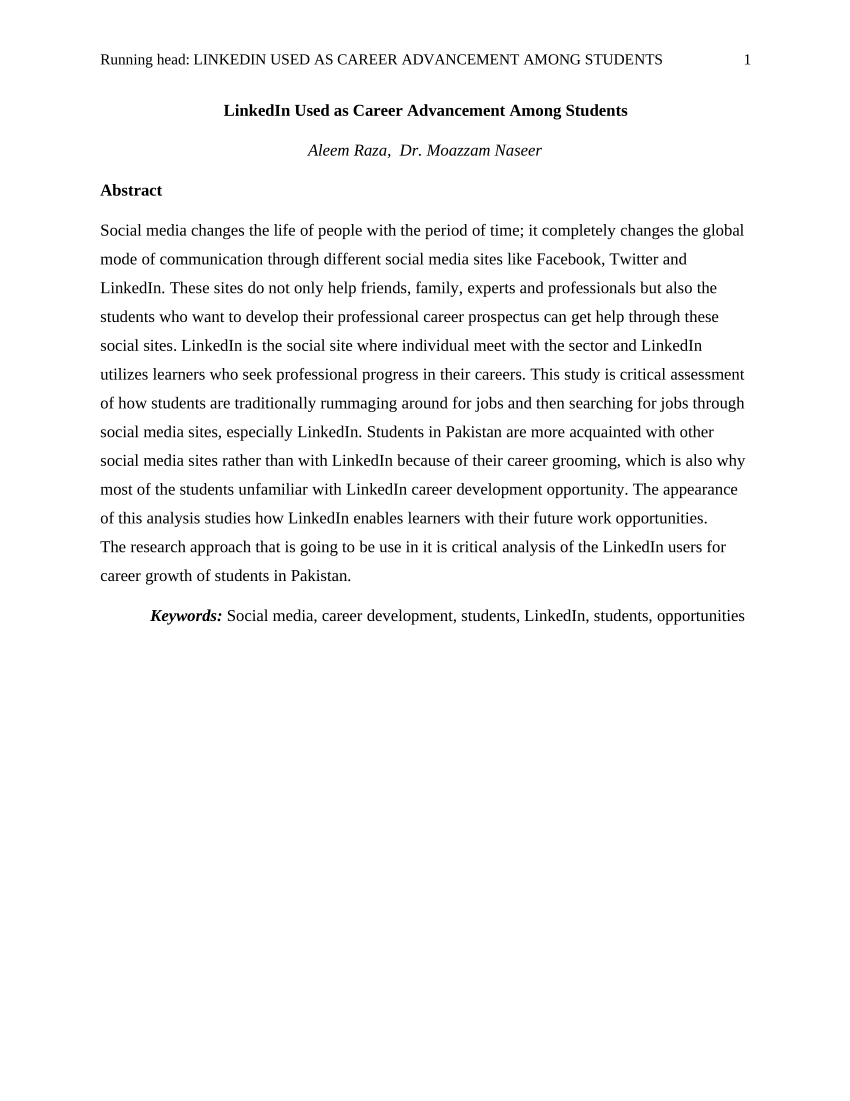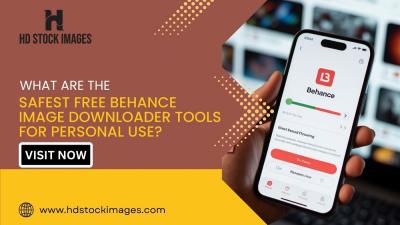In today’s competitive job market, having the right connections can make all the difference in your career advancement. Enter LinkedIn, the professional networking platform that has transformed how we connect, interact, and build relationships in the professional world. In this blog post, we'll explore essential connections you should foster on LinkedIn to help propel your career to new heights. Whether you're a recent graduate or a seasoned professional, understanding the dynamics of
The Importance of Networking on LinkedIn

Networking on LinkedIn isn't just about adding contacts; it's about building meaningful relationships and creating opportunities that can drive your career forward. Let’s break down why this platform is invaluable for professional networking:
- Access to Opportunities: Many job postings and opportunities are shared first on LinkedIn. By connecting with industry professionals, you often get the inside scoop on unadvertised roles!
- Staying Informed: Following leaders and companies in your field allows you to stay updated on industry trends, news, and insights, which can enhance your knowledge and make you more marketable.
- Building Credibility: Engaging in discussions, sharing industry-related content, and participating in groups helps to build your professional brand. This credibility can lead to recommendations and referrals.
- Learning and Growth: LinkedIn is full of mentorship opportunities. Connecting with experienced professionals can help guide you in your career path and expand your knowledge base.
Overall, networking on LinkedIn opens doors. With the right connections, you'll not only stay visible in your industry but also enhance your career potential significantly. Remember, it’s not just about who you know, but how you nurture those relationships!
3. Identifying Key Connections
When it comes to leveraging LinkedIn for career advancement, knowing whom to connect with is half the battle. Key connections can open doors, provide invaluable insights, and offer opportunities that you might not have dreamed possible. But how do you identify these individuals?
First, consider your current network. Look at the connections of your connections. You might find potential collaborators or mentors in that extended network. Additionally, search for common interests, skills, or affiliations that might suggest a beneficial connection. Here are some tips to guide you:
- Define Your Goals: Think about what you hope to achieve on LinkedIn. Are you aiming for a new job, seeking industry insights, or wanting to expand your professional knowledge? Clarity in your goals will help you identify the right people to connect with.
- Use LinkedIn’s Search Features: Use filters to narrow down your search by industry, location, or company. This can quickly lead you to the movers and shakers in your field.
- Engage with Content: Identify individuals who frequently post valuable content in your industry. Engaging with their posts can lay the groundwork for a future connection.
Remember, quality trumps quantity. It’s better to have a smaller number of meaningful connections than a long list of acquaintances. Make sure you personalize your connection requests, highlighting a shared interest or experience to spark a conversation.
4. Industry Peers and Colleagues
Your industry peers and colleagues are essential connections on LinkedIn, as they can provide the most relevant insights and opportunities. Engaging with individuals who work in your niche can lead to collaborations, insider information, and even job referrals.
Connecting with peers isn’t just about building a network; it’s also about actively participating in discussions and sharing knowledge. Here's why these connections matter:
- Broadening Your Perspective: Engaging with industry peers allows you to see challenges and solutions from different angles. Diverse viewpoints can spark innovative ideas.
- Accessing Job Opportunities: Many job openings are shared within networks before they reach job boards. Colleagues or peers can help you land those hidden gems.
- staying Updated: The industry landscape is always evolving. Your connections can help you stay informed about trends, changes, and innovations.
To maximize the benefit of your connections, engage with their content regularly. Commenting on and sharing their posts can establish rapport and keep you top of mind. Additionally, consider reaching out for informational interviews or collaborative projects to deepen these relationships.
Mentors and Influencers
Having mentors and influencers in your LinkedIn network can be a significant game-changer for your career. These are individuals who have experience and knowledge in your field, and their insights can guide your professional journey. Connecting with them isn't just about climbing the corporate ladder; it's about learning and growing in ways that you might not even have imagined!
Here are a few reasons why mentors and influencers are essential connections on LinkedIn:
- Guidance and Support: Mentors can provide invaluable advice on career decisions and help you avoid common pitfalls.
- Networking Opportunities: Influential people often have extensive networks; they can introduce you to others who can help your career.
- Skill Enhancement: Being connected with experienced professionals allows you to gain insights into new skills or trends in your industry.
- Accountability: A mentor can help keep you accountable in your career goals, encouraging you to stay on track.
To find potential mentors or influencers on LinkedIn, consider the following:
- Search for thought leaders in your industry and engage with their content.
- Join LinkedIn Groups related to your field; you might find experienced professionals willing to mentor.
- Attend webinars or events where you can connect with influential speakers.
Remember, mentorship is a two-way street. Be ready to give back – whether by providing feedback, sharing resources, or even just being an attentive mentee!
Recruiters and Hiring Managers
When you're on the hunt for a new job or thinking about a career switch, having recruiters and hiring managers in your LinkedIn network is indispensable. These professionals are the gatekeepers to many opportunities, and building relationships with them can give you a crucial advantage.
Here’s why you should prioritize connecting with recruiters and hiring managers:
- Job Opportunities: Recruiters are often the first to know about job openings. By connecting with them, you can stay ahead of the curve.
- Insider Knowledge: Hiring managers can provide insights into the company culture, what they look for in candidates, and details about the hiring process.
- Opportunity to Stand Out: A personal connection with a recruiter can help your application stand out among a sea of resumes.
- Professional Branding: Recruiters can help you refine your LinkedIn profile, making you more attractive to potential employers.
Here are some tips for effectively connecting with recruiters and hiring managers:
- Personalize your connection requests with a brief message detailing why you wish to connect.
- Keep your profile updated with relevant skills, experiences, and accomplishments to attract their attention.
- Engage with their posts and share valuable content that shows your industry knowledge.
In conclusion, building connections with recruiters and hiring managers is not just about finding a job; it's about creating a professional network that can support your overall career advancement.
7. Thought Leaders and Industry Experts
When it comes to leveraging LinkedIn for career advancement, connecting with thought leaders and industry experts can be a game changer. These individuals not only have a wealth of knowledge and experience, but they also influence trends and innovations in your field. Here’s why you should seek out and engage with them:
- Broaden Your Knowledge Base: Connecting with industry experts gives you access to insights that may not be available through conventional channels. Their posts and articles can provide in-depth knowledge about current and future industry trends.
- Expand Your Network: When you connect with a thought leader, you're essentially opening the door to their network as well. This can lead to invaluable connections that could enhance your career opportunities.
- Personal Growth: Engaging with experts can challenge your perspectives and encourage you to think critically about your own career path. Their advice and insights can inspire you to push your boundaries.
- Visibility and Credibility: Associating with respected figures in your industry can enhance your professional reputation. Commenting on their posts or sharing their content can position you as someone who is engaged and knowledgeable in your field.
To make the most out of your connections with thought leaders, consider the following:
- Follow them and engage with their content regularly.
- Share valuable insights that reflect your understanding of their expertise.
- Don’t hesitate to reach out with thoughtful questions or topics for discussion.
8. Engaging with Connections Effectively
Once you've built your network on LinkedIn, the next step is to engage effectively with your connections. It’s not just about the number of connections you have, but the quality of your interactions that can lead to career growth. Let’s look at how to engage effectively:
- Personalized Messages: When reaching out to a new connection or responding to a message, take a moment to personalize your communication. Mention mutual interests or shared connections to build rapport.
- Consistent Interaction: Regularly engage with your connections by liking, commenting, or sharing their posts. This keeps you on their radar and fosters a sense of community.
- Share Valuable Content: Position yourself as a valuable part of your network by sharing relevant articles, insights, or experiences. Your connections will appreciate the content you provide.
- Ask Questions: Don’t shy away from asking questions. This can lead to meaningful conversations and show that you value other people’s opinions and expertise.
Here’s a quick table summarizing effective engagement strategies:
| Strategy | Description |
|---|---|
| Personalized Messages | Tailor your messages to each connection to create a personal touch. |
| Consistent Interaction | Engage with their content regularly to stay connected. |
| Share Valuable Content | Position yourself as a resource within your network. |
| Ask Questions | Encourage dialogue and show genuine interest in others. |
Involving yourself actively in your network not only empowers yourself but potentially opens new doors for career advancement. Remember, the goal is to create a mutually beneficial relationship that can flourish over time.
Essential Connections on LinkedIn for Career Advancement
LinkedIn has become a pivotal platform for professionals aiming to advance their careers. Creating an effective network on LinkedIn can set the stage for numerous opportunities. Below are some essential connections to consider for career advancement:
- Industry Leaders: Connect with influencers and thought leaders in your field. Their insights can provide invaluable guidance and open doors to new opportunities.
- Colleagues and Alumni: Networking with current and former colleagues, as well as alumni from your educational background, can help create a more robust professional circle.
- Mentors: Identify mentors who can offer support, advice, and resources that are crucial for your personal and professional development.
- Recruiters: Building relationships with recruiters can keep you informed about job openings and provide a competitive edge in your job search.
- Industry Groups: Join relevant groups and forums in your industry to interact with peers, share knowledge, and stay updated on trends.
Additionally, leverage LinkedIn’s tools to interact with these connections, such as:
| Tool | Purpose |
|---|---|
| Messaging | Engage in direct conversations with your network. |
| Posts | Share insights, articles, and updates to showcase your expertise. |
| Recommendations | Request and give recommendations to strengthen professional credibility. |
In summary, focusing on essential connections and actively engaging with your LinkedIn network can significantly enhance your career progression by creating opportunities and expanding your professional reach.
Conclusion: Building a Strategic Network
Building a strategic network on LinkedIn is not just about quantity, but quality. By connecting with the right individuals—mentors, industry leaders, peers, and recruiters—you pave the way for career opportunities and professional growth.
 admin
admin








